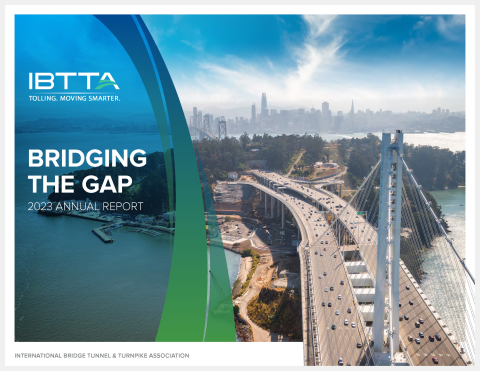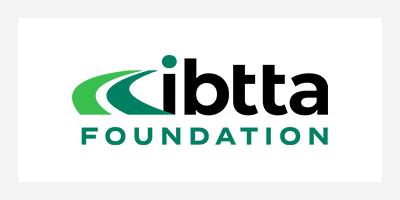- Home
- IBTTA Insights
- DRIVE Act brings ‘significant change’ to tolling pilot program
Stories
DRIVE Act brings ‘significant change’ to tolling pilot program


Neil Gray has been IBTTA’s Government Affairs Director for 22 years, and he’s been observing and analysing U.S. surface transportation policy since 1982. Here’s his take on the U.S. Senate’s DRIVE Act, in a conversation with Tolling Points.
Tolling Points: What are the biggest implications of the DRIVE Act for tolling and user financing?
NG: With Section 1021 of the Act, we’ve managed to achieve a significant change in the Interstate Highway Reconstruction and Rehabilitation Pilot Program. Until now, the nature of the program was that three states could apply for pilot projects to reconstruct and toll interstate highways, but there was no mechanical process to clear a slot if it wasn’t used. There was no administrative provision for someone at USDOT [the U.S. Department of Transportation] to say, ‘”we know this project is stagnant, so we’re going to open it up for someone else who might be able to use it.” We’ve been working for several years on language to improve that, either by expanding the number of slots or by clearing the three that are already there.
This is all rather low-key, but it’s something we’ve been trying to do for years. It doesn’t lower the bar for consideration of tolling, and it certainly doesn’t make the process any easier to win public approval at the state level. But it means a slot can be made available if you have somebody, preferably a governor, who’s willing to run with it.
Tolling Points: What are the drawbacks?
NG: There’s been some concern that the DRIVE Act would reduce TIFIA funding by a third. That’s an issue for some of our members, because a number of TIFIA’s loans have supported toll projects. There’s also a peripheral concern about Private Activity Bonds. But, really, this goes back to the core issue that the toll industry doesn’t seek much from a highway bill. We don’t get funding. The basic objective is to avoid efforts to impede or prohibit tolling, and that was notably lacking in this round.
During the Senate mark-up, a Member could have offered to just strike the whole tolling pilot program. That did not arise. It could have been dramatic and that didn’t happen, in part because we have been steadily cultivating greater understanding of, and acceptance for, tolling across Capitol Hill.
Tolling Points: That was quite a unique partnership that came together behind Section 1021 of the Act. Does this signal wider acceptance of tolling as a key part of the highway funding toolbox?
NG: In support of the Senate mark-up, IBTTA generated and shared a letter supporting the toll pilot language with 12 co-signatories. The letter’s purpose was to show that a number of significant entities shared an interest in seeing the pilot program improved, should any strong efforts arise to delete or further restrict the program. That’s a typical tool inside the Beltway. We’ve since had several additional groups ask to join in that missed the deadline. It’s a nice listing of folks, and it shows where some of our support is coming from.
We were particularly pleased that AASHTO [the American Association of State Highway and Transportation Officials] and ARTBA [the American Road & Transportation Builders Association] could sign on. When an organization represents members in 50 states or state governments, it can be difficult to get agreement on very precise policy initiatives. ARTBA is the largest representative of the construction industries, and it has a broad array of issues to pursue in a highway reauthorization. In this case, they both found a way to say yes, even though it was a narrow niche for them, not a broad plank.
To me, that says states are so strapped for transportation funding options that they are liking the notion of another tool in the toolbox if they need it. Whether or not they intend to use it, they like having it there. It’s not a full endorsement of tolling, not by a long shot. But greater flexibility is something that is fine to have, and that we can all agree on.
Tolling Points: What will it take to actually get the bill passed?
NG: The big, hanging improbable now is that this piece of legislation is just the first of four parts needed. Most importantly, we’re missing the finance title. EPW [the Senate Environment and Public Works Committee] is free to define the program and what spending should be, but they need the Finance Committee to give them that revenue. You cannot send an unfunded piece of legislation to the floor, and the proposed program drastically exceeds what the Highway Trust Fund can provide, so it desperately needs the creativity of the Finance Committee to give it the additional revenues needed.
Independent of the talk about a six-year surface transportation bill, the current highway legislation, MAP-21, comes to an end on July 31st, which means reimbursements to states will fall to nothing if an extension isn’t enacted. This would be catastrophic for the states, and there’s a general expectation that a “punt” will occur, maybe just two months to give us time to really focus on a multi-year bill, or maybe six months to take it into next year’s session of Congress. Congress will have to work equally hard to do a three-month, six-month, or six-year bill. It’s all going to involve serious math, and a level of creativity about where to find the funds. There’s a general grasping at straws for what an appropriate revenue device would be.
Tolling Points: What are the next steps, and how can IBTTA members help?
NG: Well, stay tuned, basically. We can’t pressure Finance or the House Ways & Means Committee. Plenty of others are already doing so for many different needs and programs. But this might be the only highway language we see all year. If we need a show of support from members, the request could come at any time and very quickly between now and December.

Joining IBTTA connects you to a global community of transportation professionals, offering unmatched opportunities for networking, knowledge-sharing, and collaborative innovation in the tolling and transportation sector.
Follow IBTTA on social media for real-time updates on transportation trends and collaborative opportunities.





